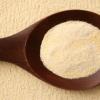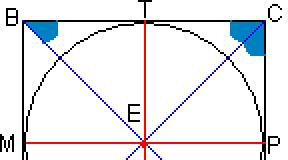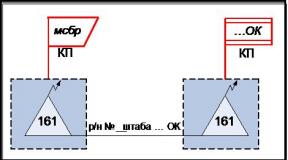Can laminate flooring be laid on a wooden floor. Video: how to put a laminate on a wooden floor with your own hands, instructions and tips. Laying the underlayment under the laminate
In a fairly extensive list of flooring, there are not too many options that are compatible with a wood base. True, observing special rules, you can lay almost everything. But the laminate floor, built on a floating principle, is ideal for home improvement, erected over a structure of beams, logs, boards. However, compatibility does not save independent craftsmen from studying the nuances according to which the laminate is laid on a wooden floor, and from the need to remember the specifics of ever-moving wood.
Can laminate flooring be installed on wood floors?
Laminated panels only stick together; there is no need to attach them to static building structures, that is, to the floor or walls. The floating floor rests freely on the substructure, allowing it to expand and contract. And it, in turn, does not prevent the laminate from changing geometric parameters following the temperature drops and fluctuations in humidity.
The structural specificity of the laminated board makes it possible to do without adhesives that hermetically seal the butt seams. Although the glue technology exists, it is used extremely rarely due to the laboriousness, significant consumption of glue and the inability to disassemble and reassemble the permanently docked panels in another place. Adhesive-free, the most popular method of fastening pleases both the wooden base and the owners of suburban property with excellent spontaneous aeration, which is necessary for ventilation of the components of the wooden structure. Perfectly ventilated through the seams, the floor covered with laminate lasts longer and does not rot.
Despite the artificial origin of the laminated flooring, its behavior during operation is not much different from the behavior of sawn timber. After all, its main element is made of MDF panels, chipboard, HDF and similar boards created by pressing wood products. The basis of a laminated floor is an important characteristic that determines the scope of the material. In theory, laminate flooring is not recommended to be laid in rooms in which wet cleaning should be carried out regularly. Arrangement of bedrooms, children's rooms, offices, living rooms is allowed. However, HDF flooring is considered moisture resistant and can be laid on floors in hallways and even kitchens.
Note. For flooring in rooms with a characteristic wet mode, a 33 class laminate floor is suitable for the wear resistance scale, but its cost is rarely satisfied with the owners of suburban housing.

Rules for preparing a wooden base for laying
There are general requirements for the characteristics of the surface to be equipped. According to the SNiP instructions with the assigned normative collection number 3.04.01-87, for laminated flooring:
- a leveled surface is required, the relief differences of which do not exceed 2 mm within a 2m² area;
- a max slope of 4 mm is admissible, evenly distributed over 2m in any direction.
Do not deviate from the instructions specified in the technical regulations, as if not observed, the delicate locking system will be damaged. The grooves will loosen, fragile thin ridges will break, the floor will not last long, you will have to re-grind.

You can, of course, partially change the elements if only a few boards are damaged, but the repair procedure will require a lot of effort. In such situations, the laminated panels are dismantled to the point of restoration, then the broken elements are replaced and re-laid in the reverse order. In case of multiple damage to the laminated strips, partial replacement is out of the question. In the best case, several boards will be preserved, which can be used to equip pantries, closets, compact covered verandas.
Before laying laminate panels on a wooden sub-floor, an audit of the base is mandatory. The scope of work is determined, as a result of which the base, brought into full order, will be ready to hoist the covering on its reinforced "shoulders".
Preparation steps depend on the degree of wear of the wooden structure:
- Old plank floor will have to be disassembled to the support bar, because over the years of its many years of operation, sensitive natural organic matter could suffer from an excess of moisture or become infected with a fungus. Find out through the floorboards what the real state of affairs is, if the wooden floor is not the ceiling of a spacious basement. Those who have a high underground are lucky. It will provide an opportunity to examine and repair the details of the ceiling without tedious dismantling. We will carefully examine the entire list of structural elements. We cut out the dubious sections of the beams and the lag, replace with a new bar. Planks removed from the floor with a low sub-floor, which inspire confidence in reliability, are turned upside down with the undisturbed seamy side up, we re-lay them, fill the cracks with foam or a repair compound. We replace old worn-out boards without regrets. We will “walk” the floorboards fixed in the back with a scraper. All structural components of a long-established wooden floor must be carefully treated with antiseptic impregnation and fire retardant. Now it is easy to buy a mastic that performs both functions important for wood.
- New plank floor there is also no need to scrupulously diagnose, since it was built not so long ago, probably covered with compounds that protect against putrefactive bacteria and from fire. Therefore, preparation for laying a laminate on a newly built wooden floor will not take a lot of time and labor from the contractor. We check the fasteners, change or renovate loose fasteners, "sink" nails or screws a couple of mm in the floorboards. Foam or fill with wood glue mixed in half with sawdust, cracks, if necessary, we loop.
- Floor with constructive impairments needs to be finalized. It is very difficult to determine in advance the range of actions in such cases, because the situation can have many different reasons. For example, if the floorboards bend, the lag system will have to be strengthened by installing additional beams or replacing the boards with a thicker material. It is often more profitable and easier to lay on top another row of boards of similar thickness, stacked "in the cross" of the previous layer. The latter measure is permissible if the additional subfloor, together with the laminate and underlay, does not take away from the ceiling height too much cm, which is very necessary for a limited space.

You can level the rough wood base with plywood, GVLV, OSB sheets or by lining pieces of roofing material under the logs, as well as glassine folded in several layers. You can purchase a "constructor" from Knauf with a full set of fasteners, supports and plywood sheets. The method is chosen based on economic considerations and ease of implementation.
Laying technology for laminated boards
We suggest that you familiarize yourself with the thematic video:
It is impossible to cover the wooden rough base with steam or waterproofing, it will interfere with ventilation. Condensation, harmful to wood, will accumulate under the insulation. But if the fervent desire to isolate could not break anything, it is better to use a diffusion membrane.
To lay it before laying, you will only need a substrate, it is advisable to choose a natural material for this. For the sake of the safety of the wooden structure, it is worth forgetting about the height of prices for cork and the bitumen-cork or bitumen-rubber pressed options created with its use. The thickness of this layer is chosen based on the same parameter of the laminated panel. Usually, strips of 3mm backing are placed under the 8mm laminate without overlaps. No stationary fastenings to the walls or to the base are needed, only gluing with tape with periodic dots or solid lines.

Note. The choice of the direction of the layout of laminated dies is influenced not so much by the preferences of the owners as by the direction of the existing floorboards. Laminate panels should lie across the planks. This means that the underlay strips located under the coating need to be laid along.
Suppose it has already been decided how we will lay the laminate panels, an elementary plan has been drawn in advance by hand and a rational scheme has been chosen. There is plenty of information on the methods, rules and layout options on the site. Here are a couple of related articles:
You can dock the boards by gradually building up the coverage with each piece separately or by docking the pre-assembled rows. The preferred method is usually indicated by the material manufacturer, and we investigate the piece by piece algorithm.

The actions of the stacker when assembling the laminated floor by the piece:
- We will be located in the starting corner, usually farthest from the doorway, taking 4 panels with us. In two of them (1st and 3rd), planned to be laid against the wall, you must first cut off the ridge. Do not touch the groove, it is always directed towards the stacker.
- Let's first outline how far we will move the panels in adjacent rows to avoid cross-intersections and thereby increase the reliability of the connections. The recommended offset for the offset is not less than 30 cm. We will shorten the second board by this amount.
- In the manner indicated by the manufacturer, depending on the type of the Click or Lock locking system, we dock the 1st and 3rd panels, then we attach a piece of the 2nd board to them, then the 4th uncut block.
- We move the assembled floor segment to the designated place by installing spacer spacers approximately 1 cm thick between it and the adjacent walls. They will provide the gap required for the laminate to move during thermal expansion.
- We build up the first row with the 5th board with a cut ridge, then with the 6th we lengthen the second strip of coverage.
- By analogy, we follow until the victorious completion of the laying of the first two rows, not forgetting to cut off the ridge deployed to the wall. We cut the boards that end both strips according to the precisely measured distance. To snap the latter in the rows of elements, we use a special mounting bracket.
- Next, we follow the course we have learned, only the combs do not need to be trimmed anymore.
- We measure the panels of the last row at the place of installation and cut off taking into account the temperature gap, attach and snap into place using a clamp-clamp.

Methods for bypassing pipes, laying under radiators, and arranging doorways follow the standard rules for laminate flooring.
An important point. In a large room, the temperature gap must be left not only along the walls. It is formed every 10 m, measured in width, and 8 m in length. The expansion joint is left in the opening along the axis of the closed door leaf. After installation, the gap is closed with a plastic or aluminum profile.

Absolutely simple rules explaining how to economically lay a laminated flooring with your own hands will help to perfectly decorate suburban and city property. And for those who were not going to deal with the arrangement with their own hands, knowledge of the technology will help to competently control the actions of not always diligent builders.
Among modern materials used for installation on the floor, laminate flooring occupies a special position - this versatile material is one of the few that can be used both on a monolithic base and on a base made of wooden boards. True, it should be noted that it is possible to lay the laminate on the wooden planks of the old floor only if a number of technological operations are followed, designed to make the installation work as easy as possible and to extend the life of the floor. At the same time, this technology allows not only to significantly save on materials, but also to significantly facilitate the labor intensity of work.
Wooden floor, what are the features and benefits
Unlike concrete pouring or sand and gravel floor screed, a wooden floor has an indisputable advantage - it, like all natural materials, fits perfectly into almost any interior, and most importantly, it provides greater safety and comfort. Indeed, the wooden plank floor is warmer, does not give off cold and allows you to be on it without shoes. True, such a floor has its own characteristics - a floor made of wooden boards should be as flat as possible for laying any surface coating and not have foci of fungal infections.
On the other hand, the boards lying on the logs, even if firmly strengthened and treated with an antiseptic, still remain separate fragments of one whole, which gives the right to assume that the entire floor structure is still subject to changes - deflections, structural deformation of fibers, seasonal changes in moisture wood. This "floating" floor is the main feature of the base of the coating under the laminate.
For almost all types of wooden floors, regardless of the material of the boards, the surface of the coating becomes a problem over time. Under normal operating conditions, when all conditions are taken into account when laying the floor, starting from filling the space under the logs and ending with taking into account the direction of the location of the fibers of the boards, problem areas still arise over time, where the boards simply begin to warp. Such altered surfaces of the coating will create the main problem areas when laying the laminate, changing the surface of 1-2 boards in a small area will ultimately lead to a breakdown of the interlocking joint of the panels and the need to replace the entire coating.
Thus, laying a laminate on a wooden floor requires a certain amount of preparatory work designed to ensure maximum compliance with the conditions for laying the coating.
What needs to be done when preparing a wooden floor for laying a laminate

The technical conditions for laying the laminate on any surface require that the surface be as flat as possible and free from any flaws and errors. The difference in heights of the base for laying the laminate is maximum 2 mm per 1 linear meter of the floor. But with regard to flaws, here it is necessary to prepare the base in such a way that there are absolutely no protrusions and bumps on it, which can lead to damage to the strips of the material.
Thus, in order to prepare a wooden floor for laying a laminate, you must:
- Conduct a survey of the entire surface of the floor for the presence of rot and affected boards;
- Provide leveling of floor boards or their partial replacement;
- Level the surface in order to ensure its maximum leveling, both along the grain of the wood and across;
- Provide maximum depth of fasteners - screws, nails, bolts, so that the caps do not come out to the surface.
For a new floor, there is no great need to inspect the space under the boards in order to ensure the safety of the boards, it is enough to additionally treat the wood with a deep penetration antiseptic composition, and to ensure effective ventilation of the space between the logs.
For a coating that has been in operation for a long time, it is necessary to check the condition of the boards, the log and make sure that there is no rot, places of infection with fungal infections and physical defects of the boards.
Using a 2 meter long rule, the condition of the base surface is checked. At the same time, areas with large deflections and deformations of the boards are revealed, these areas are marked on the surface with a marker for further processing. Processing can be carried out either manually using a wooden or metal plane, or using an electric scraper or electric plane. The surface is leveled both along and across the grain of the boards.
The final stage of working with floorboards is usually carried out in the form of deepening fasteners into the thickness of the boards, nails, screws and self-tapping screws are sunk into the thickness of the boards to a depth of 3-4 mm, this is enough so that the fasteners do not interfere with the laying of the next layers of the coating.
Decking the base layer

To ensure the maximum strength of the surface of the wooden floor, an additional layer of slabs can be installed. This technique is more effective compared to laying laminate flooring on wooden boards:
- Firstly, building boards made of chipboard, fiberboard, plywood or wood-based board provide a large monolithic surface.
- Secondly, the slab base will allow the laminate to be laid in an arbitrary direction, and not just across the direction of laying the boards.
- Thirdly, the large area of the slabs allows you to avoid large distortions of the surface and provide the necessary indicators for laying the laminate.
Laying a layer of slabs in no way relieves you of the preparatory work associated with leveling and preparing the plank floor. All operations with a plank floor must be performed in full.
Laying slabs begins with removing the skirting boards around the perimeter of the room, slabs, as well as wood and laminate, undergo deformation when heated, which means that when laying, it is necessary to provide for a thermal gap both between the slabs and between the coating and the walls. Usually, for this, when laying, a gap is set between the wall and the coating of 0.7-1.0 cm, and between the plates 0.2-0.3 mm.
The boards are laid perpendicular to the direction of the boards, thus providing a large surface leveling area. When laying, the height of the slabs is pre-checked - at the joints, the height of the adjacent slabs should be the same, and during installation there should be no height differences even by 1 mm.
The slabs are stacked in a staggered manner with a shift of ½ the length of the slab. Plates of small thickness up to 8 mm, in addition to fixing with screws or nails, can be laid on glue or mastic. But for a thickness of 10-15 mm, such a fixation will be an extra mass of material and so sufficient to fit tightly on the boards.
As with a wooden floor, the surface of the slabs after laying is checked by the rule and level, for the presence of differences. And in addition, a robot is carried out to deepen the heads of the nails into the surface of the plate.
Materials and technology for laying the preparatory layer

The peculiarity of the laminate is the composite nature of the coating, when a whole coating is made from individual plates, in which the connection of individual elements occurs due to the lock connection. Such a coating is distinguished by the ability to "play" under the weight of objects, while the flexibility of the plates allows maintaining the integrity of the coating even with significant deformations.
When installing a laminate, it is necessary to take into account the fact that when heated, the laminate itself increases, and this means that it is necessary to take into account the so-called thermal gap between the walls and the covering. Rigid fixation of the laminate on the base would lead to a quick breakdown of the coating and, as a consequence, the need to replace it, but the use of a shock-absorbing substrate allows the laminate to bend under the weight of objects without compromising its integrity.
As a substrate for a laminate on a wooden base, sheet and roll materials are usually used. Sheet materials include sheets of extruded polystyrene foam or natural cork. Roll materials include cork or polyethylene foam backing. The thickness of such material is usually 3 mm, but in some cases, for example, for laying on the first floor of a building, a thicker material is also used - 5 mm.
For concrete bases, there is no big difference what material is used, and roll and sheet material equally well fit on concrete, but for wooden bases it is not recommended to use roll polyethylene. Covering the entire surface of the floor, such a material actually blocks access to the space under the floor of the air and thus clogs the moisture present there. Sheets and roll cork allow what is called "breathing" on the floor, and thus provide the necessary ventilation under the floor.
Laying of sheet materials is carried out by the method of laying "diagonally", when the sheets are built up with displacement of strips along their length relative to each other by ½ sheet. Another point when laying a substrate in the form of sheets is the need to arrange strips with an offset of 90 degrees relative to the direction of laying the laminate itself.
The seamy side of the first row of the backing is fixed with double-sided tape, but the rest of the strips are simply fastened with ordinary stationery wide tape.
Technology of laying laminate on a wooden floor

For the laminate, as well as for laying the substrate, it is recommended to use the diagonal laying method, when the plates are displaced by ½ the plate length relative to the previous row. Laying laminate flooring is carried out in two main ways:
- Docking strips one by one with a gradual increase in the coverage area;
- And by connecting the boards in one row and further joining the entire row to the already composed area.
For small spaces, both docking methods can be used. But for rooms with a wall length of more than 7-8 meters, joining in rows will be very difficult.
The first row of laminate is laid opposite the front door, taking into account a thermal gap of 7-10 mm from the wall, and the necessary cutouts for heating communications. The edge of the planks facing the wall is cut to the width of the lock joint, thus ensuring maximum coverage for the installation of skirting boards.
The panels are laid in such a way that the connecting groove of the panels faces the side of the depositor. The first board is cut in half, using it as an offset step, it is usually recommended to make an offset for panels more than 30 cm thick, usually in thickness.
Laying of the first row is regulated by wedges inserted between the laminate and the wall. The second row is selected already both by the type of lock connection and by the texture of the image. Offset is provided by using a cut of the first plank. All panels are connected in a row, and then inserted into the lock and connected into a single whole.
As you move to the front door, all rows are aligned with the walls, observing the required thermal gap. The last row is set taking into account the door threshold, if there is none, then a metal plate is used to close the panels.
As you can see, the rules for laying laminate flooring on a wooden floor practically do not differ from the general rules and technology for arranging laminate flooring and almost anyone who has a desire to transform their home can do it.
The most convenient way to renew a plank floor in an old house is to put new material on the floor. With linoleum, it's as easy as shelling pears, but what to do with a piece, floating floating way and requiring the most even base? Have you decided to renovate the floor on your own and opted for a laminate? Not sure how to install laminate flooring on a wooden floor? Learn the intricacies before starting the installation, because during the repair process, you can get a lot of pitfalls.
Laminate, laid on a wooden base in compliance with the technology, will serve no worse than other flooring
Wood is a rather capricious material, like most natural coatings. It is vulnerable to pests and rodents, is not moisture resistant and is highly flammable. Laying a laminated board on a wood base is more difficult than on another rough surface.
Manufacturers of laminated boards do not recommend laying the material on a subfloor made of natural wood. This is due to the property of wood to deform over time, which will also affect the evenness of the final floor.
However, if there is no particular choice and it is not possible to concrete the floor, be warned at least minimally.
- To begin with, make sure that the base is suitable for subsequent loads and is complete. It should not have chips, cracks or crevices.
- If the flooring is made from untreated wood, examine the planks for fungus, rot, or pests.
- The floorboards themselves should lie flat without bending.
- Check that the boards are not rotten. The wood should not crumble in the hand, turning into dust.

Damaged boards and adjacent boards are subject to replacement
Important! If there is one of the above defects, the strips need to be repaired or replaced.
If the floorboards are not flawed, but the entire coating is loose, just fix the planks with any hardware. Laying the laminate provides for the most even, not wobbly base.
Why laminate? Advantages of the material
Every year, the increasing popularity of laminate flooring is due to its attractive appearance, which is able to compete with many expensive materials. The patterns applied to the coating can imitate any texture without losing a decent appearance.

A wide range of laminates allows you to choose panels for any interior
Laminate is classified according to its quality and performance. So, the most expensive and high-quality material belongs to the highest class.
However, in general, the laminate of any classification has the following advantages:
- strength,
- easy care,
- environmental friendliness,
- wear resistance,
- long service life,
- ease of installation.

If the laminate is properly maintained, it can last for more than a dozen years.
The minimum term for the suitability of a laminate with proper care is about 17 years. During use, the boards do not wear out, do not fade, do not lose their aesthetic and operational qualities.
Prices for various types of laminate
Should you use it?
Laminate flooring is an affordable replacement for expensive parquet flooring. It is actively used for the renovation of residential and commercial premises. The material is easy to install, but too picky about the quality of the subfloor. It is possible to lay laminate on old floorboards, but only in compliance with a certain number of requirements, the main of which is high-quality and competent preparation of the base, including the repair or replacement of damaged elements, leveling the base and applying a substrate.
Piece planks have locks for connection and fixation in the desired position. Their additional fastening to the base is not required. The laminate floor is laid loosely on a prepared wooden base, allowing it to "breathe", contracting and expanding in accordance with temperature changes and the degree of humidity.

If the laminate is statically and securely fixed to a wooden base, the floor may deform following the rough base.
The structural difference of the laminate board is that during installation, the material does not need to be firmly fixed with glue or hardware.
Not many types of decorative coatings can be placed on a wooden base as you would like. Unavailable materials usually include laminate flooring. However, if certain conditions are met, it is possible to assemble a wooden floor from almost anything.
So, a floating laminate laid on a log structure is perfect for finishing a wooden floor. But before laying the laminate, you need to understand some important points of installation and the specifics of wood.
Possibility of laying laminate on a wooden base
Laying laminated parquet boards on the floor is carried out according to a floating scheme, that is, individual elements of the coating are fastened only to each other, and nothing holds them on the basis. If the covering is laid in this way, nothing will prevent the thermal deformation of the main floor, which is very characteristic of wood.
In this case, the base does not interfere with changes in the shape of the laminate associated with the same temperature and changes in air humidity. Thus, the wood base and the laminated decorative cover are practically independent of each other.
The design of laminated board joints allows them to be laid without gluing the joints. Of course, it is possible to use adhesives to ensure even more reliable adhesion of the elements, but the locking system is usually quite enough. In addition, in the case of gluing, you will have to spend too much glue in order to lay the laminated flooring on a large surface.
In the event of a breakdown, in this case it will not be possible to detach and replace the damaged boards. Laying the floor without glue is good in the case of a wooden base, not only by simpler installation, but also by the fact that, thanks to the lock fastening, additional ventilation of the wooden structures is provided, which protects them from premature decay.
Laminate consists of several layers, the main of which is usually made of high-strength fiberboard. Due to the weakness of this material to humidity, it is not recommended to lay laminate flooring in kitchens and even more so in bathrooms, but it is quite possible to lay this covering in bedrooms and nurseries, since all the constituent substances are completely safe for the environment and human health.
Related article: How can you make a sofa bed with your own hands?
Preparing your wood floor for laminate flooring

In order for the laminate to lay down reliably and serve for a long time, the wood base must be properly prepared. So, the following conditions must be met:
- the surface of the base must be flat - the height differences should not exceed 2 mm;
- the slope of the surface to the horizontal must be less than 4 mm and evenly distributed over the entire floor area.
Following these instructions is necessary in order not to damage the parquet floor locking system. Large irregularities can cause grooves and ridges to buckle and break. Of course, in this case, you can easily replace several damaged boards, but if the damage is done to a large area of the floor, the repair will require a lot of effort and will take a long time. Probably, in this case, you will have to completely remove and renew the coating.
Before laying the wood floor, the wood base is carefully inspected and assessed. It is necessary to determine the amount of work and analyze the condition of the wood frame in order to understand whether it is able to take on the weight of the floor structure.
Preparation depends on the type and amount of floor damage.
The old deformed wooden floor from the planks will have to be disassembled to the ground, since during operation the tree rots and becomes infected with microorganisms. It is impossible to assess the state of the lag through the cracks in the floor if there is no basement under them to look from below.

If the subfloor is spacious, it is possible not to disassemble the floor covering, but to repair the base from the other side. All logs should be carefully examined, damaged areas are cut off and replaced with fresh material. If the cover has been removed, the boards should also be inspected for damage. More or less suitable are allowed to be turned over and used again.
The overlaid wooden floor is treated with antifungal and fire-retardant impregnations, the gaps between the boards are filled with a sealant or elastic putty. Fixed fresh planks, along with usable old ones, can be processed with cycles so that the wooden floor is as flat as possible.
Related article: Arrangement of children's swing
If wood floors have recently been constructed from scratch, they have probably already been treated with all the necessary treatments. To prepare a fresh base, you just need to check the reliability of the fixings of the logs and the flooring. Loose screws are replaced, the cracks are covered. If the boards bend in some places, you should securely fix the wooden floor to the base using polyurethane foam or long fasteners.
If there are serious technical flaws in the floor structure, you can either try to fix them, the complexity of which varies widely depending on the type of violations, or lay another layer of floorboard on top across the original one.
To level the base of the floor, a variety of sheet materials made of wood are used - plywood, gypsum plasterboard, drywall, chipboard, fiberboard and much more. It is also possible to correct the logs by placing pieces of roofing material, linoleum or other elastic material under them. Any method is chosen, depending on the available finances, ease of work and the level of irregularities.
Laying laminate
It is impossible to protect the decorative coating with waterproofing materials when laying on a wooden base, since polyethylene and similar substances will interfere with the ventilation of the floor structure. Also, this material will accumulate condensation, which will very quickly destroy all the supporting structures of the floor.
Before laying the laminate, you only need to lay the substrate, which will play the role of sound-absorbing and heat-insulating material. It can be made both from synthetic substances - foamed polyethylene or extruded polystyrene foam, and from natural - jute or cork. Cork and the rubberized coverings produced on its basis, although very expensive, will ensure a long life for the wooden floor.
The thickness of the backing should correspond to the thickness of the layer of the laminated board. Usually the proportions are about 1: 3. In this case, the safety of the laminate will be ensured, and the insulation and soundproofing characteristics will not cause any complaints.


























